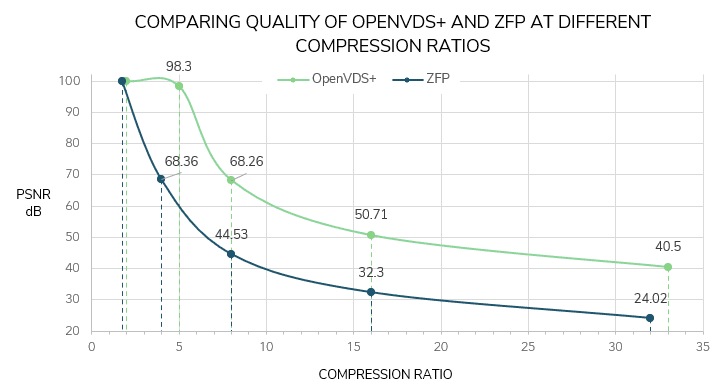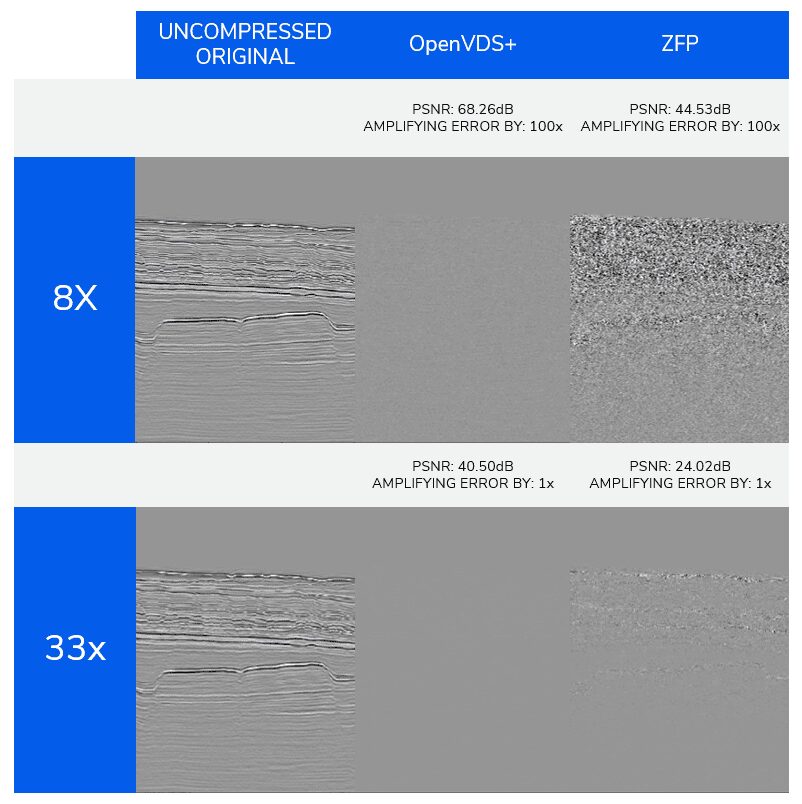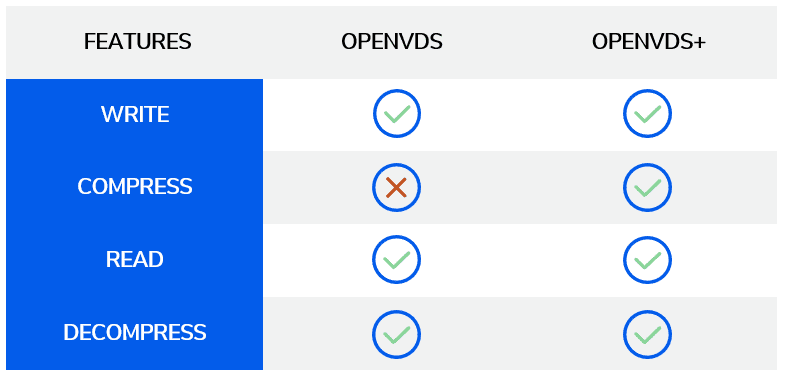Bluware Introduces OpenVDS+ Combining Open-Source OpenVDS with Industry-Leading Wavelet Data Compression Technology
Bluware now provides OpenVDS+, enabling compression of OpenVDS, an open-source storage format for fast, random access to multi-dimensional volumetric data.
In June 2020, Bluware contributed OpenVDS Version 1.0 to The Open Group Open Subsurface Data Universe™ (OSDU) Forum. OpenVDS+ is a free-to-use library that adds Bluware’s industry-leading wavelet compression technology to OpenVDS.
OpenVDS
OpenVDS is an open-source implementation of Bluware’s Volume Data Store (VDS™), which has seen extensive industrial deployments over the last two decades. It is designed to handle multi-petabyte data volumes, and be stored in an object cloud storage service such as Amazon S3, Microsoft Azure Blob, Google Cloud Platform, or a local file. Organizations can use this highly flexible format to store E&P data such as seismic lines, pre- and post-stack volumes, regularized single-z horizons/height-maps, geo-body volumes, and (multi-) attribute volumes with up to six dimensions.
Data commonly used in seismic workflows can be stored along with all original and new metadata in OpenVDS. This makes it possible to move from existing seismic data formats to OpenVDS and back, while retaining all metadata.
OpenVDS contains an open-source API to read and write data making it easy to integrate into workflows.
OpenVDS overcomes inherent limitations in existing seismic data formats and offers powerful capabilities such as random data access and support for low-cost cloud storage options.
Bluware Compression
Bluware’s wavelet compression method was developed more than 15 years ago, optimized specifically for seismic data, and is continually being advanced without compromising quality. It is benchmarked repeatedly against alternative data types by the world’s largest oil and gas companies, and consistently found to offer the best real-world performance and cost-efficiency. It is the only compression method to support true lossless compression and adaptive levels of compression simultaneously.
Bluware’s adaptive compression allows applications to select a higher compression ratio than what is stored in the source OpenVDS. Web portals can request a highly-compressed image while computations can use lossless data from the same data source, without creating multiple copies.
When comparing Bluware OpenVDS+ compression with ZFP open-sourced compression, VDS achieved significantly higher PSNR (quality) at similar compression ratios, as shown in the chart below.

Figure 1: The graph shows that at the same compression quality (68dB), OpenVDS+ will compress 8x, while ZFP can only manage a 4x ratio. Similarly, ZFP’s quality at 10x is on par with OpenVDS+ compressed at 33x, significantly reducing data size.
The impact of quality on seismic data is visibly notable. Even amplifying the error by 100x, at a compression ratio of 8x, the quality of OpenVDS+ delivers a very consistent image compared to ZFP, which is very noisy. At 33x, the quality impact is visible even when the results are not amplified. The results of OpenVDS+ show minimal noise (good), while ZFP is very noisy (bad).

OpenVDS+
OpenVDS+ delivers all the benefits of OpenVDS with the additional state-of-the-art compression. The result is a single format that can ingest any seismic format that can be stored in low-cost scalable cloud storage or on-premise file systems. It can also be used efficiently in any workflow through the use of highly-performant APIs and random data access.
OpenVDS+ is fully compatible with OpenVDS and solves all the challenges of seismic workflows, eliminating time-consuming and expensive conversion to internal, proprietary formats.

By providing OpenVDS+, Bluware is enabling the oil and gas industry to accelerate digital transformation initiatives and adopt cloud computing for subsurface data.
Our decision to open-source OpenVDS and provide OpenVDS+ equips the industry with a solution that tackles the data issues that have stifled innovation in geophysics computing. We now have an opportunity to finally standardize on a seismic format that not only stores data, but also delivers usable data to applications. This is a significant step forward for the energy sector.
